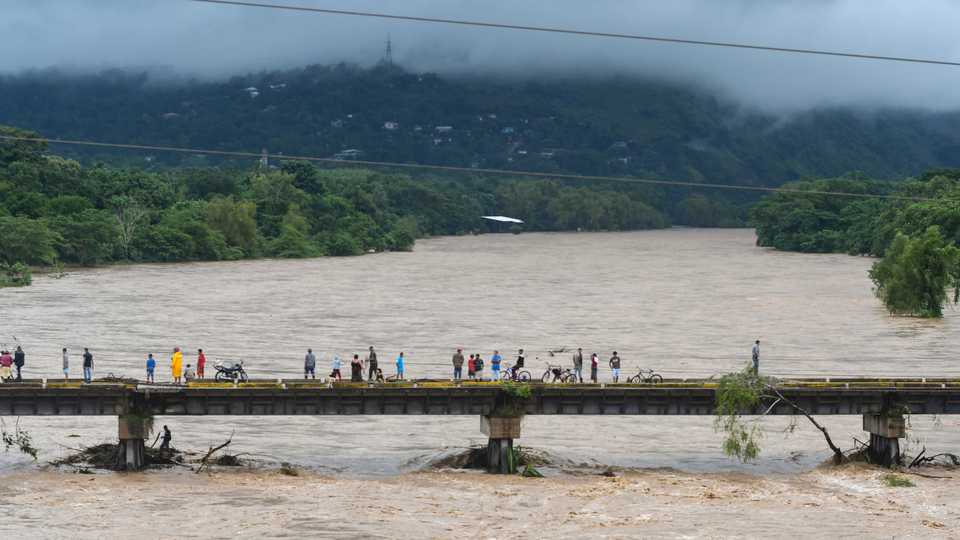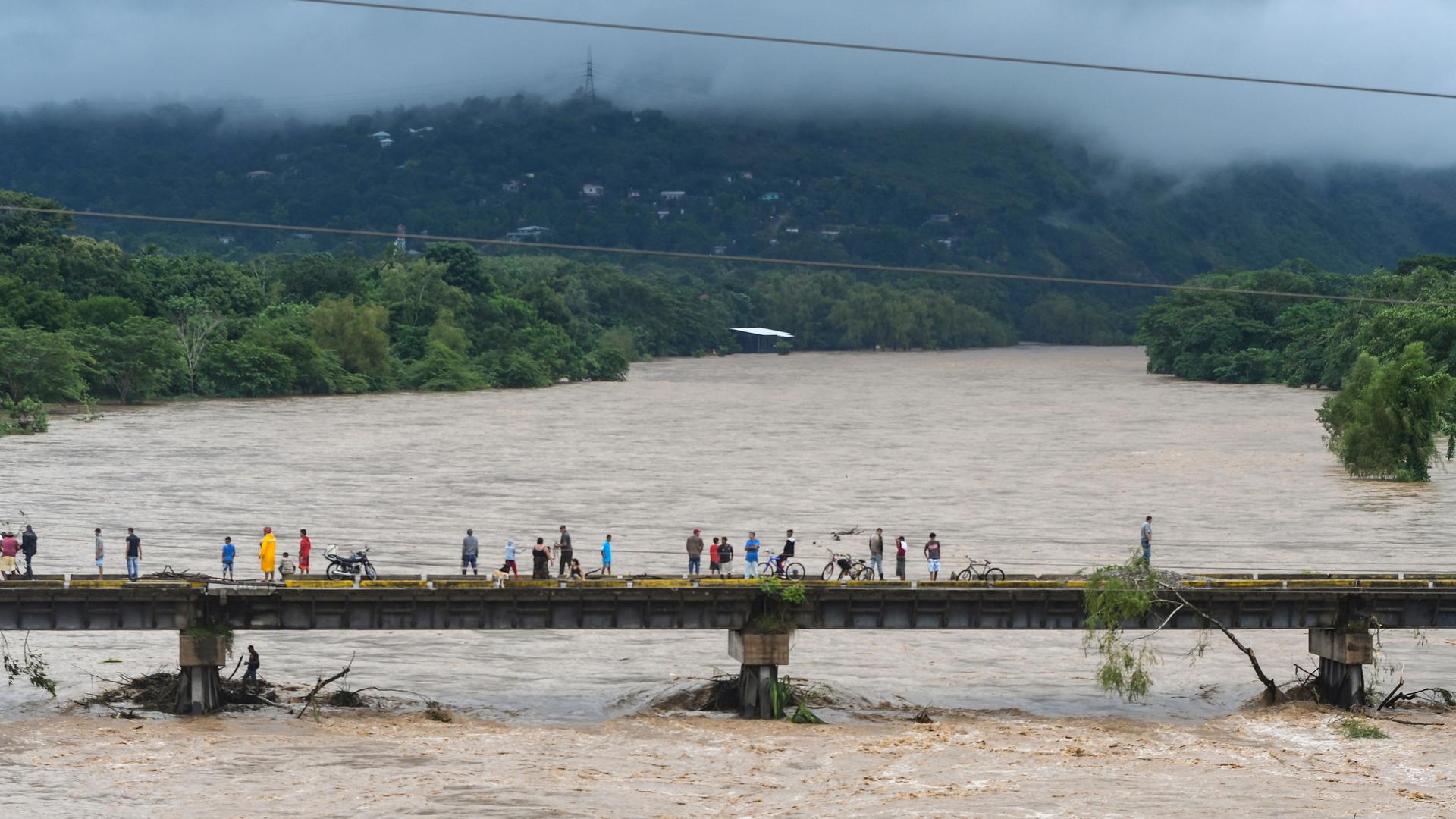
Hurricane Eta, one of the most powerful storms to hit Central America in years, has plowed into Nicaragua in an impoverished region of its Caribbean coast, battering homes and infrastructure and threatening deadly floods.
Eta came ashore south of the port of Puerto Cabezas, pulling roofs off houses, knocking down trees and power lines, and causing flooding in the region, said Guillermo Gonzalez, the head of Nicaragua’s disaster management agency SINAPRED.
The US National Hurricane Center (NHC) said Eta was an “extremely dangerous” Category 4 storm on the five-step Saffir-Simpson scale, bringing “catastrophic winds, flash flooding, and landlines” to Nicaragua and portions of Central America.
“We’re really afraid, there are fallen poles, there’s flooding, roofs torn off, some of the zinc on my house fell off,” said Carmen Enriquez, a resident of Puerto Cabezas.
“We spent the whole night with strong gusts of wind, accompanied by rain,” Kenny Lisby, head of a local radio station, told AFP news agency. “It’s possible there will be quite a lot of destruction.”
As of the early afternoon, the storm had so far “not done catastrophic material damage” as some had feared, Vice President Rosario Murillo said in a national broadcast.
READ MORE: Flooding feared as Hurricane Eta heads to Central America
‘We’re in a pretty ugly situation here’
Nevertheless, around 1,227,000 people in Nicaragua, including nearly 500,000 children, were at risk from the storm’s fury, the UN children’s agency UNICEF said in a statement.
When it struck the coast, Eta was blowing potentially devastating winds of 140 miles per hour (225 kph) the NHC said. The storm should weaken rapidly as it advances inland, it added.
In neighboring Honduras, rivers burst their banks, towns, and cities on the Atlantic coast flooded, and landslides hit roads.
Nicaraguan officials said there were still no reports of deaths or injuries.
But in Honduras a 13-year-old girl died in a mudslide on her home in a neighborhood of the northern city of San Pedro Sula, which has been hammered by rain, authorities said.
The indigenous regions in Eta’s path in northern Nicaragua are some of the country’s poorest. Many people live in wooden homes that stand little chance against such a powerful storm.
“We’re in a pretty ugly situation here,” said Elizabeth Enriquez, a local leader of the Miskito ethnic group that live in the region. “There’s flooding and strong winds. And so we’re really worried because there’s a lot of rain.”
At the request of the government, the UN World Food Programme said it had sent 80 metric tons of food for distribution in the region.
“We joined forces to respond immediately, pre-positioning food for the people affected. Our staff has also deployed to the hurricane-impacted area so as to support the national response with logistics and telecommunications support,” said Giorgia Testolin, WFP Representative in Nicaragua.
READ MORE: Tropical Storm Eta ties record, expected to become hurricane
Eta to hit central Honduras next
Earlier, Javier Plat, a local Catholic priest, told Reuters news agency there was a city-wide power outage in Puerto Cabezas and government-arranged shelters had reached capacity.
“This city of 70,000 people is very vulnerable. We have houses made of wood and adobe. The infrastructure of the residential houses is our main vulnerability,” Plat said.
Nicaragua on Monday evacuated at least 3,000 families, including fishermen who live in the most vulnerable villages on the Atlantic coast, officials said. Some 20,000 people were taking cover in shelters, SINAPRED said on Tuesday.
Nicaragua President Daniel Ortega’s government issued red alerts in several regions facing the hurricane. On Monday, ports in Honduras, where the government carried out evacuations, were forced to shut.
Eta is forecast to move into northern Nicaragua through Wednesday afternoon and hit central Honduras on Thursday.
Forecasting models then show it crossing over Cuba and approaching the tip of the Florida panhandle this weekend.
Flash and river flooding is also possible in Jamaica, southeast Mexico, El Salvador, southern Haiti, and the Cayman Islands, the Miami-based hurricane center added.
El Salvador also evacuated citizens as a precaution.
Eta is the 28th named storm of the 2020 Atlantic hurricane season, tying an all-time record set in 2005, the NHC said.










Discussion about this post